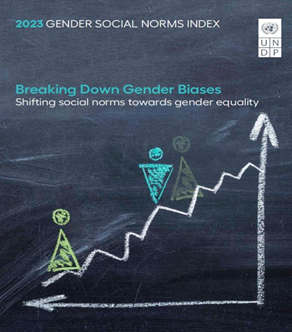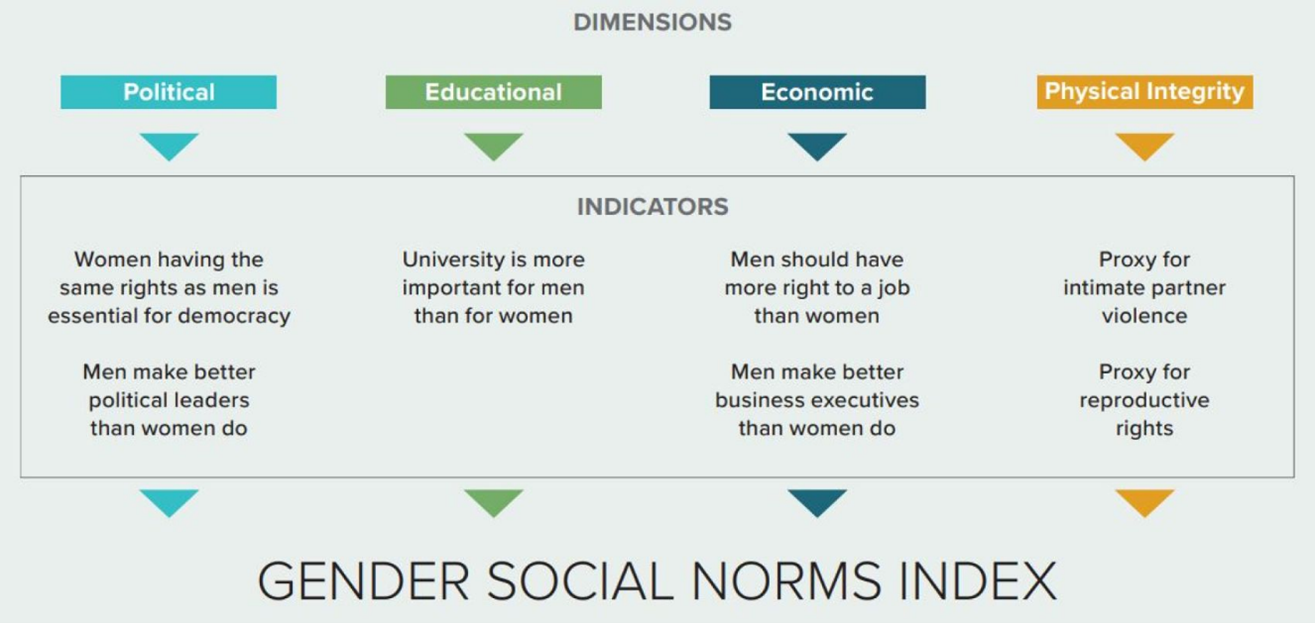Prelims 19-03-2024
Gender Social Norms Index (GSNI) 2023:

Why in news?
- The UNDP’s 2023 Gender Social Norms Index reveals persistent prejudice against women and stagnation in gender equality.
About GSNI:
- First introduced in the 2019 Human Development Report, GSNI provides an in-depth account of the root causes of gender inequality that hinder progress for women and girls.
- It quantifies biases against women, capturing people’s attitude on women’s roles along four dimensions: political, educational, economic and physical integrity.
- It is released by the United Nations Development Programme (UNDP).

Key findings of GSNI 2023:
- The index, covering 85 per cent of the global population, reveals that close to 9 out of 10 men and women hold fundamental biases against women.
- Nearly 90% of people still hold at least one bias against women and 25 per cent of people believe it is justified for a man to beat his wife.
- Countries with greater bias in gender social norms also show a lower presence of women in parliament.
- Indigenous women, migrant women and women with disabilities have meagre political representation, demonstrating how overlapping biases can further reduce opportunities for women.
- The recent increase in education achievements has not translated into better economic outcomes and opportunities for women.
PM-Surya Ghar Muft Bijli Yojna:
Why in news?
- The Centre has tweaked the new ₹75,000-crore PM-Surya Ghar Muft Bijli Yojna (Prime Minister’s Rooftop Solar: Free Electricity Scheme).
What are the changes?
- Originally, the plan aimed to fully pay for 1-3 KW solar system installations in one crore households by partnering with renewable energy service companies. Now, the scheme will cover only up to 60% of the installation costs.
- Households wanting to benefit from the scheme must pay the remaining amount and at least ₹20,000, depending on the installed system’s power capacity.
- Households can get a low-interest, collateral-free loan to help cover the cost.
About the scheme:
- It was launched on February 15, 2024.
- Aim– To provide free electricity to one crore households in India, who opt to install roof top solar electricity unit. The households will be able to get 300 units of electricity free every month.
- The scheme focuses on the household segment with up to 3 kW system, which covers most of the residential consumers in India.
- A subsidy of 60% of the solar unit cost for systems up to 2 kW capacity and 40% of the extra system cost for systems between 2 and 3 kW capacity.
- The subsidy is limited to systems up to 3 kW capacity, meaning no financial assistance will be given for capacities exceeding 3 kW.
- Funding– A central financing of Rs 75,021 crore, which will mostly be given as a direct subsidy to the consumer.
Who are eligible to apply for the Scheme?
- The applicant must be an Indian citizen.
- Must own a house with a roof that is suitable for installing solar panels.
- The household must have a valid electricity connection.
- The household must not have availed of any other subsidy for solar panels.
Benefits of the scheme:
- Free electricity for households.
- Reduced electricity costs for the government.
- Increased use of renewable energy.
- Reduced carbon emissions.
